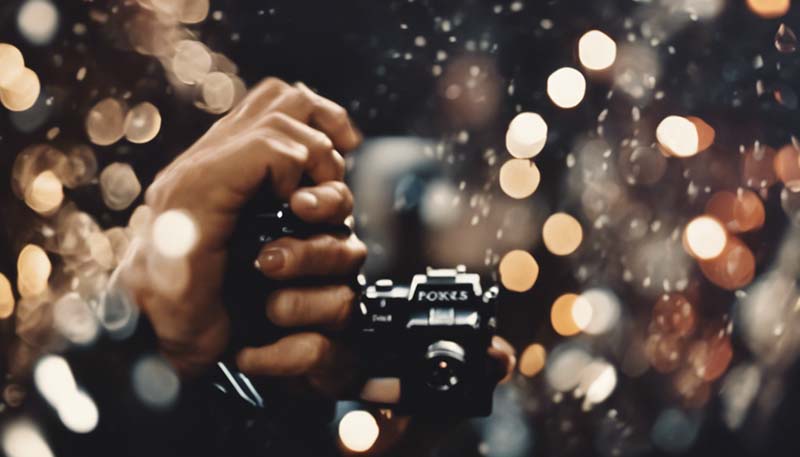The Master of Suspense: A Study of Brian De Palma's Film Techniques
The Master of Suspense: A Study of Brian De Palma's Film Techniques
Brian De Palma, a renowned American filmmaker, is often regarded as a master of suspense. With a career spanning over five decades, De Palma has left an indelible mark on the cinematic landscape with his unique visual style and innovative narrative techniques. This article delves into the various film techniques that have come to define De Palma's work, examining how they contribute to his reputation as a master of suspense.
Introduction
Born in 1940, Brian De Palma studied at the prestigious Sarah Lawrence College and later at the American Film Institute. His early influences include Alfred Hitchcock, whose work would greatly impact De Palma's approach to suspense and visual storytelling. Throughout his career, De Palma has directed a wide range of films, from psychological thrillers like "Dressed to Kill" (1980) to war films like "Casualties of War" (1989). However, it is his suspenseful narratives and distinctive film techniques that have garnered him the most acclaim.
Advertisement
Split-Screen and Multi-Character Narratives
One of De Palma's most recognizable techniques is the use of split-screen. This technique allows the audience to see multiple perspectives or events simultaneously, heightening the sense of tension and urgency. In films like "Snake Eyes" (1998) and "Mission: Impossible" (1996), De Palma uses split-screen to cross-cut between different locations, creating a sense of chaos and confusion that is central to the suspense of the narrative.
Long Takes and Steadicam Shots
De Palma is known for his use of long takes and Steadicam shots, which provide a fluid, uninterrupted view of the action. These extended shots often follow characters as they move through complex, elaborately choreographed sequences, drawing the audience into the scene and creating a sense of immersion. The famous Steadicam shot in "Carlito's Way" (1993) is a prime example of this technique, as it follows the protagonist through a crowded train station, building tension as the viewer anticipates an impending confrontation.
Visual Storytelling and Composition
De Palma's films are characterized by their meticulous attention to visual composition. He often uses symmetrical framing and deep focus to create a sense of order and precision, which contrasts with the chaotic events unfolding within the frame. This careful composition not only enhances the aesthetic appeal of his films but also serves to heighten the tension and drama. In "Dressed to Kill," De Palma uses a series of meticulously composed shots to build suspense, leading to the film's shocking climax.
Psychological Complexity and Character Study
De Palma's films often delve into the psychological complexities of their characters, exploring themes of obsession, voyeurism, and identity. This focus on character study adds depth to the suspense and intrigue of the narrative. In "Body Double" (1984), the protagonist's descent into a world of sexual obsession and voyeurism is paralleled by a growing sense of paranoia and danger, which contributes to the film's overall sense of unease.
Homages and References to Hitchcock
As a self-proclaimed fan of Alfred Hitchcock, De Palma often pays homage to the master of suspense in his films. He incorporates elements from Hitchcock's work, such as the use of a MacGuffin, the exploration of voyeurism, and the portrayal of morally ambiguous characters. These references not only pay tribute to Hitchcock but also serve to situate De Palma's films within the tradition of suspense cinema.
Sound and Score
The use of sound and score is another crucial aspect of De Palma's film techniques. He often employs dissonant music and sound effects to create a sense of unease and tension. In "Carrie" (1976), the use of a high-pitched, atonal score during the film's climactic scene adds to the horror and shock of the moment. Similarly, in "Blow Out" (1981), the manipulation of sound and audio perspective plays a key role in building suspense and revealing crucial plot points.

Conclusion
Brian De Palma's films are a testament to his mastery of suspense and his innovative approach to visual storytelling. Through his use of split-screen, long takes, visual composition, psychological complexity, homages to Hitchcock, and sound design, De Palma has created a body of work that is both thrilling and thought-provoking. As a master of suspense, his films continue to influence and inspire filmmakers and audiences alike.
References:
- Deleyto, Celestino. "The Secret Agent: A Study in De Palma's Narrative Method." Post Script: Essays in Film and the Humanities, vol. 14, no. 1, 1994, pp. 37-46.
- Hanson, Kevin. "The Films of Brian De Palma." McFarland, 2015.
- Kolker, Robert Philip. "A Cinema of Gestures: De Palma's Dressed to Kill." Cine-Tracts, vol. 2, no. 2, 1980, pp. 69-79.